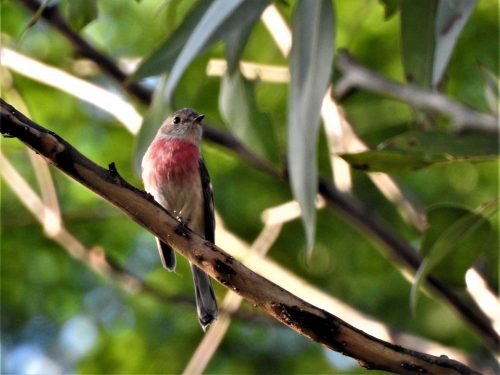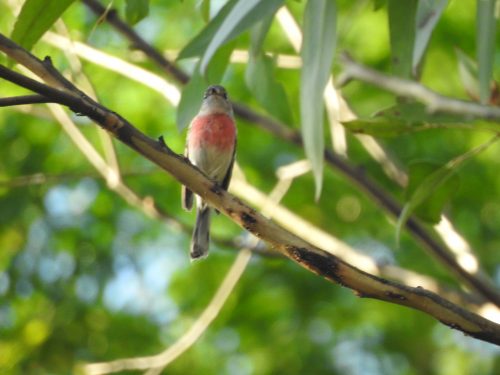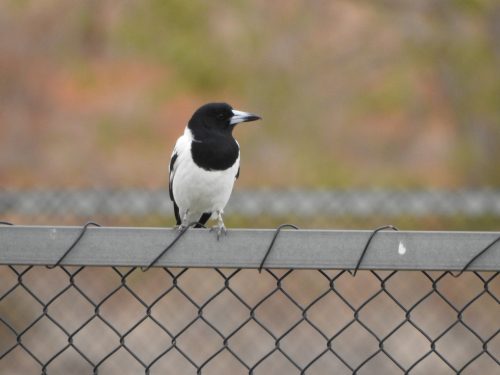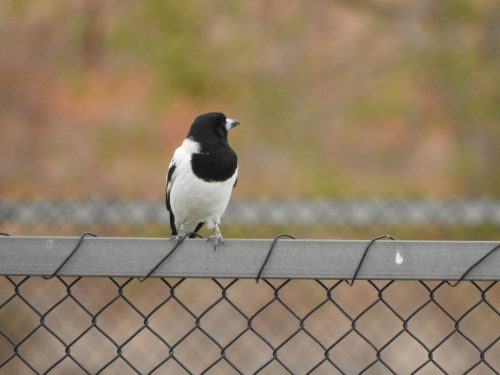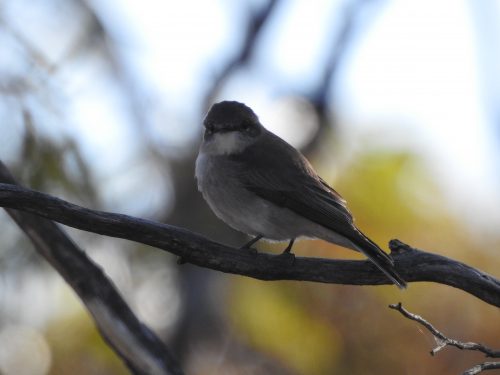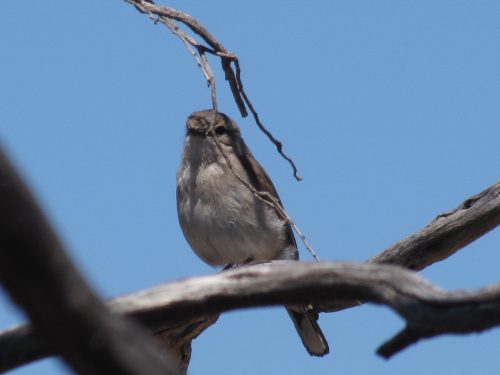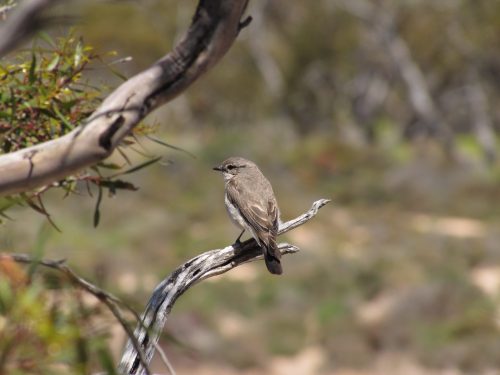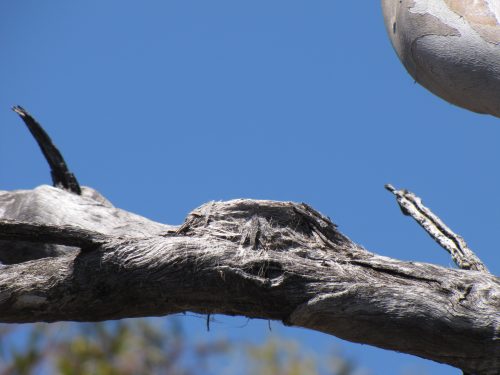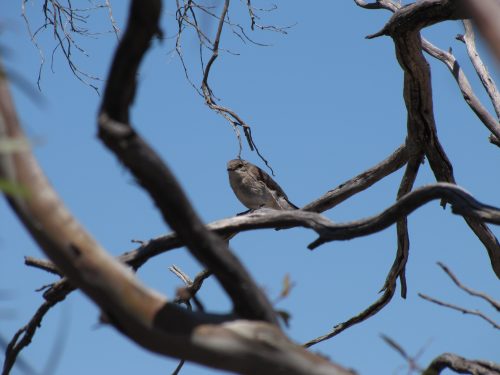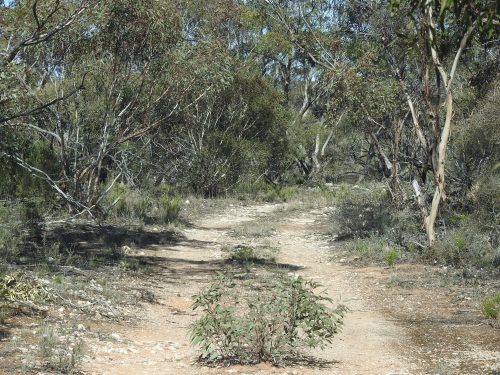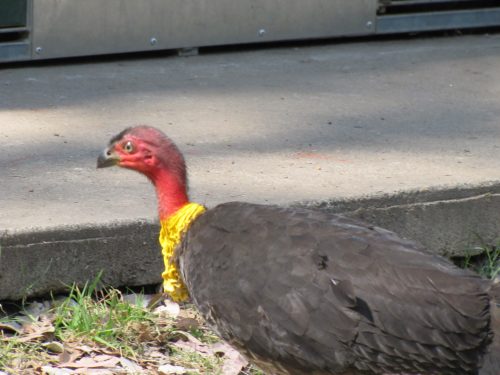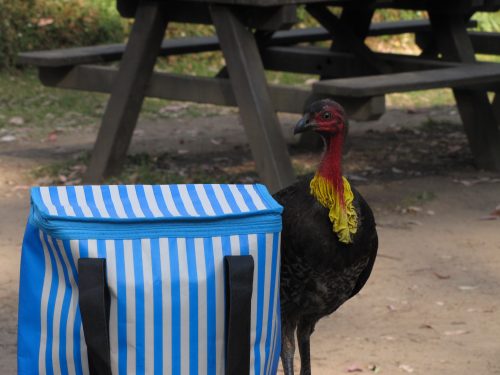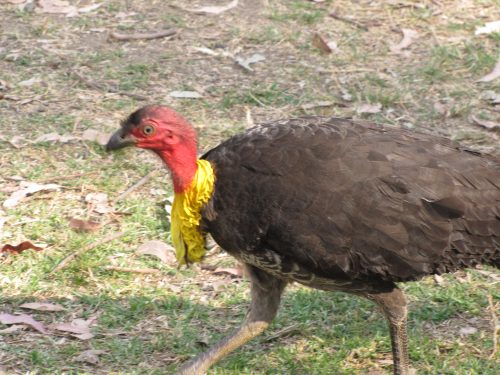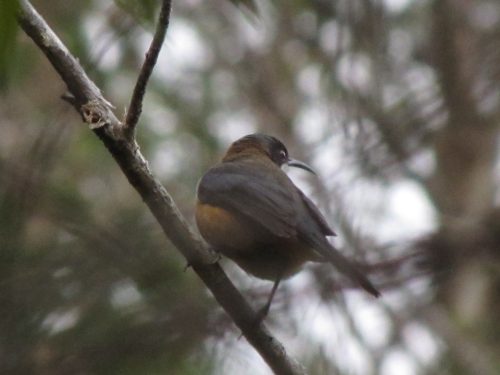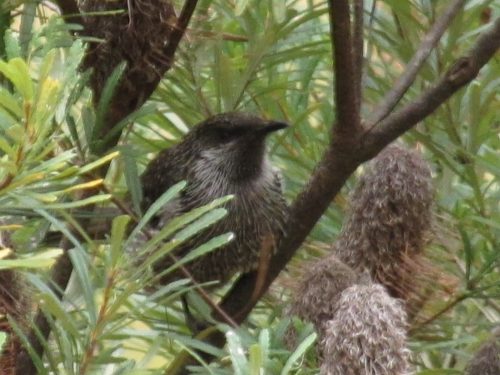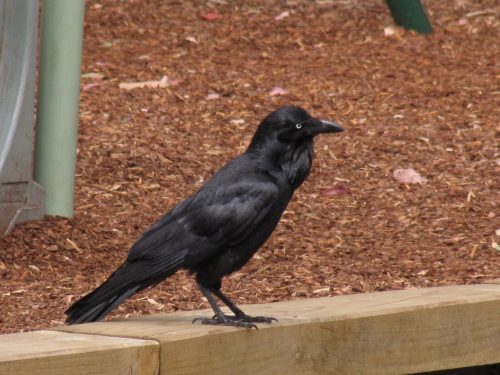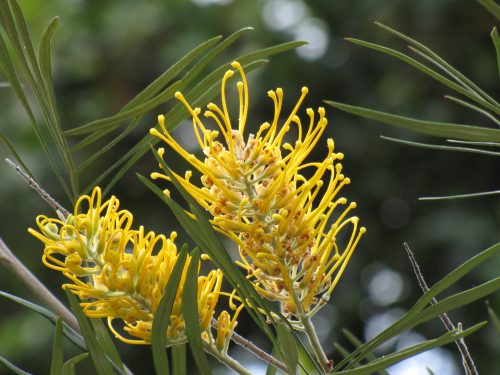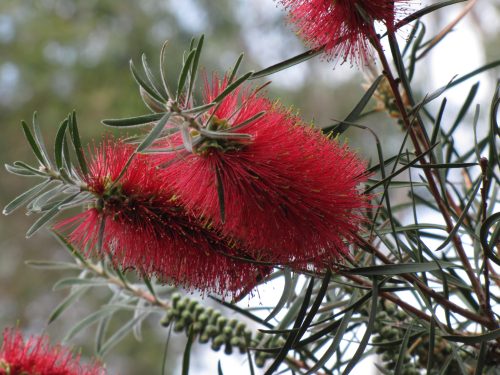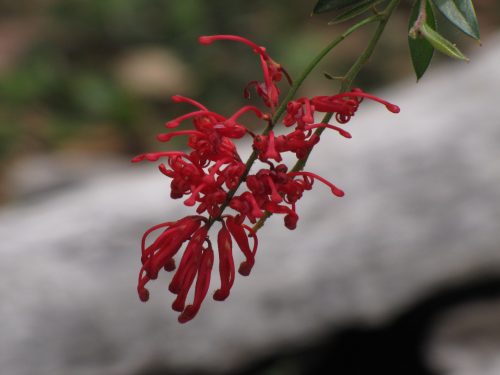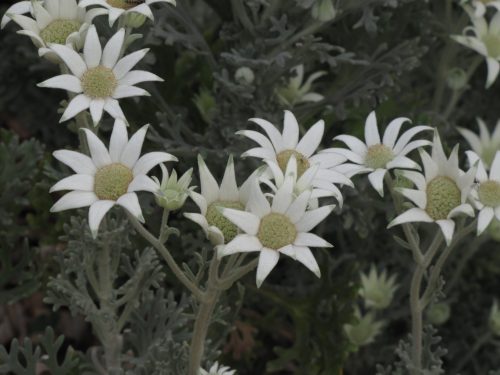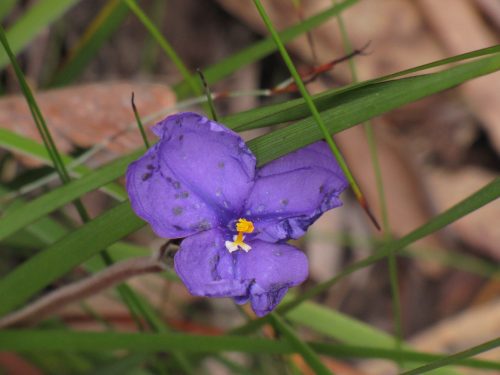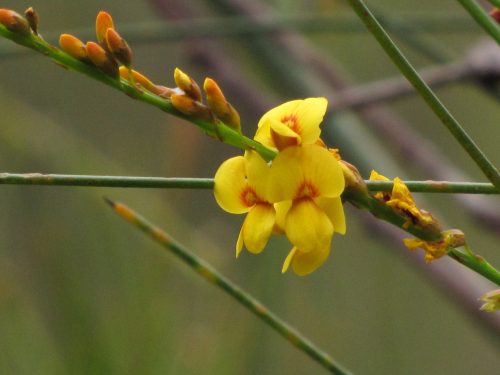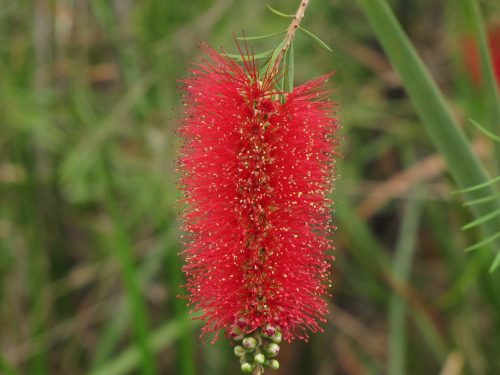A new bird for my life list
I saw a new bird for my Life List yesterday.
A Life List is a list of all the birds a birder has seen. A “lifer” is a bird species seen for the very first time. It is easy to add lifers when travelling in a country for the first time. It is much harder to get one in your home country. It has been several years since I added another bird to my life list. I guess I need to get out more, especially in parts of Australia I haven’t been to yet. Say, ALL of Queensland and ALL of the Northern Territory and ALL of Tasmania.
Lane Cove National Park, Sydney
I spent a few hours yesterday in one of my favourite birding spots, Lane Cove National Park in Sydney. This delightful park has many well-kept picnic areas with toilets and barbecue facilities. It is also very accessible, being about ten minutes west of Chatswood and about 20 minutes drive from the Sydney Harbour Bridge (depending on traffic conditions.). I am fortunate that this park is so accessible from my son’s home in Artarmon. It is easy to see why this has become a favourite birding spot for me.
The bird in question, as shown in today’s photos, is the Rose Robin. It is a delightful bird with soft rose-coloured breast feathers. Until I saw it, I didn’t fully appreciate its delicate colouring. The females and juveniles lack the bright colours of the males, though some females may have a faint wash of pink. The birds feed on insects.
Distribution
The Rose Robin has a widespread distribution, from south-east Queensland, through the eastern ranges of New South Wales, throughout southern Victoria and occasionally into South Australia.
You can read more about the Rose Robin on the Birds in Backyards site here.
Good birding,
Trevor
Pied Butcherbirds
I have recently travelled from my home in Murray Bridge, South Australia to Sydney. Along the way I stopped many times to do some birding and, where possible, take some photos of the birds I saw. On the first day of my journey, I stopped for lunch at Lake Cullulleraine which is a small community on the banks of this lovely lake. It is about a half hour drive west of Mildura in the far north-western part of Victoria.
After having my lunch I slowly drove around the area adjacent to the lakeside picnic area. In this part of the small town is a well-kept football oval as well as grass tennis courts. I saw a few Red-rumped Parrots. a small group of Masked Lapwings patrolling the grass and several Australian Magpies and Magpie Larks. On the netting around the tennis courts, I saw perched an adult plumage Pied Butcherbird. This bird is the subject of today’s photos.
Grey Butcherbirds are relatively common and widespread in the area where I live. But for Pied Butcherbirds, I generally have to travel some distance north or east to see this species, though I have recorded it once just south of Murray Bridge. Grey Butcherbirds are regular visitors to my garden but I have never recorded a Pied Butcherbird at home. My records go back over 35 years. On the rest of my journey to Sydney, I saw Pied Butcherbirds frequently as I drove along. On the other hand, where I am staying in Artarmon, Sydney, I have only ever seen Grey Butcherbirds despite both species being present throughout this area. This is probably just a case of not being in the right place at the right time.
For further reading, just click on one of the bird species mentioned in this post.
Good birding,
Trevor.
Just a shy little Jacky Winter
Earlier this year I went for a Saturday afternoon drive to the Lowan Conservation Park near Bowhill north-east of my hometown of Murray Bridge, South Australia. I needed to get out of the house after some cold wintery weather, and my daughter had never been to this park. She had just returned home after teaching for the last two years in Ethiopia. The day promised to be sunny and calm, ideal for a picnic and a spot of birding. Over the years I have visited this small park in the mallee areas of our state on a few occasions and it sometimes throws up a few birding surprises.
As we had afternoon tea – a cuppa and some treats from our local bakery – we sat in the afternoon sunshine. My daughter had her current book to read (Tim Winton’s The Shepherd’s Hut) and I had my camera and binoculars at the ready. Flitting around in the nearby mallee trees was a Jacky Winter, one of our flycatcher species. It’s called a Jacky Winter possibly due to its call which sounds a bit like it is saying ‘jacky winter, jacky winter.’ At least, that’s what it sounds like to me. Another common name is ‘Peter Peter’ and that is probably a closer rendition of its call. Whatever the origin of the name, the bird is a generally unassuming little bird which can often go unnoticed in the Australian bush. More often it is sighted quietly sitting on a branch, a tree stump or fence post watching the surrounding grass intently, just waiting to snatch up a tasty morsel – a passing insect or two.
On this visit to the Lowan Conservation Park, I had good views of this bird, but I had trouble getting my camera focussed on this individual. It kept flitting around, catching afternoon tea and calling all the time. Every time I would try to focus – off it would go again. The only time it sat still enough for a shot in focus it was in the shade – see the photo above.
So that you can get a better view of this species, I have posted several photos taken two years ago in the Murray-Sunset National Park in north-west Victoria. These shots include the beginnings of a nest consisting mainly of a spider web.
Further reading:
Harassed by a turkey
Brushturkeys are not everyone’s favourite bird. In fact, many people regard them as pests. This is especially so when the turkeys scratch around in their gardens. I believe that they can make quite a mess of a garden when they are making a nest mound to incubate their eggs.
On our recent trip to Sydney to stay with family, my wife and I had several occasions where we spent time in the nearby Lane Cove National Park. It is a lovely park with plenty of picnic areas for visitors. As a bonus, the park is only a ten-minute drive from where we were staying.
On one visit to the national park, we were relaxing near the river. We had enjoyed a hectic few weeks with our grandchildren – ages 9 and 6 – and we were just looking for a quiet time of relaxation. One of the resident Brushturkeys, however, saw us as easy pickings. It wandered around our chairs looking for a handout or two. When this wasn’t forthcoming, it jumped on the picnic table and began to scrounge around our things on the table (see photo below).
It actually tried to unzip our cooler bag. It was obvious that it had done this before and knew exactly what to do. It was unsuccessful because I chased it off. A few minutes later, it returned, this time attempting to open our biscuit tin. This was a beautifully decorated tin my wife had bought recently at the fair run by the school our grandchildren attend. It began scratching at the lid of the tin, attempting to open it. I again chased it off before it could scratch the tin. It was also in danger of moving the tin off the table and the lid may have opened on impacting the ground.
Pests
As I said at the beginning, many people regard these birds as pests. I admit that they can be very troublesome. I have a different point of view. I really enjoy seeing these birds when we come to Sydney, for the following reasons:
- We don’t have the species in South Australia where I live. (There is an introduced population on Kangaroo Island off the SA coast.)
- The birds have character and attitude. In heaps – and sometimes this character spills over into being annoying.
- They are easy to photograph – they come up close to humans and are generally unafraid.
Good birding.
Trevor
An uncooperative Eastern Spinebill
Last week I had a close encounter with a very uncooperative Eastern Spinebill (see photo above) in the Ku Ring Gai Wildflowers Gardens in St Ives in Sydney. My wife and I enjoy visiting these gardens every time we come to stay with family in Sydney. Usually, there are many Australian native plants in flower. This year, however, it has been very dry in recent months in the Sydney region, so the flowering was not as good as we had expected. I still managed a few good photos, some of which are shown at the end of this post.
When the gardens are in full flower they can be wonderful. The numerous honeyeaters in this part of Australia flock to gardens and national parks like this and the birding can be wonderful. On this occasion, the bird life was very quiet and the Eastern Spinebill and the Little Wattlebird (see photo below) were the only honeyeater species present the day I visited.
Although I saw quite a few spinebills, the only photo I managed was the one above. The bird I managed a shot of turned its back at the crucial moment. It then flew off before I could get another photo. Such is the life of a nature photographer.
On my wanderings around the various paths in the gardens, I managed only a moderate list of birds. It was one of those slow birding days and not much was calling or coming into view of my binoculars. I managed a few photos of an Australian Raven (see photo below) and a very poor shot of two Laughing Kookaburras (not shown here because it was not in focus because they were too far away and then flew off before I could get closer).
Other birds seen or heard include:
- Striated Thornbill
- Eastern Yellow Robin
- Rainbow Lorikeet
- Sulphur-crested Cockatoo
- Australian Brushturkey
- Magpie Lark
- Eastern Whipbird
- Pied Currawong
Interestingly, I did not see any Australian Magpies on this visit. I usually see a few in the picnic areas. Nor did I see any of the resident Swamp Wallabies which often come out of the bush into the picnic areas as well.
More photos
Now for something different. Below, I have included some more photos taken in the gardens. These are some of the beautiful native plants flowering at the moment.
Enjoy.
Trevor
